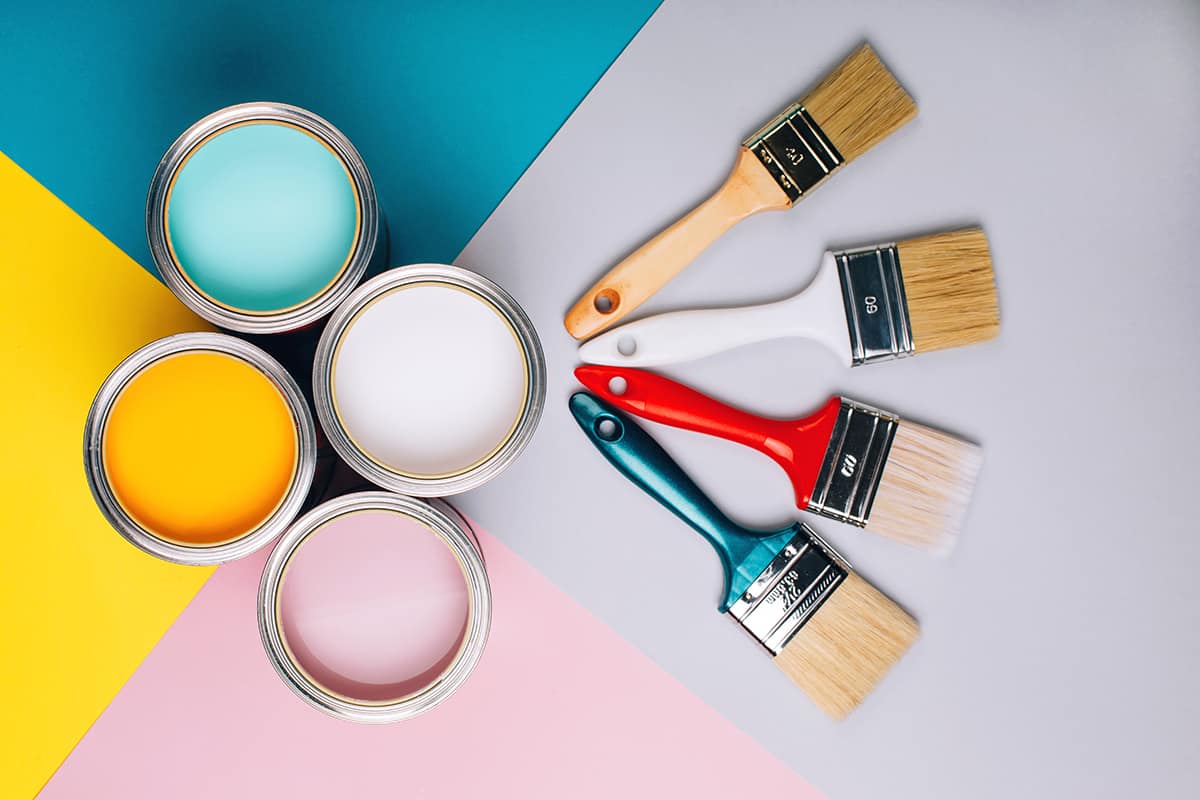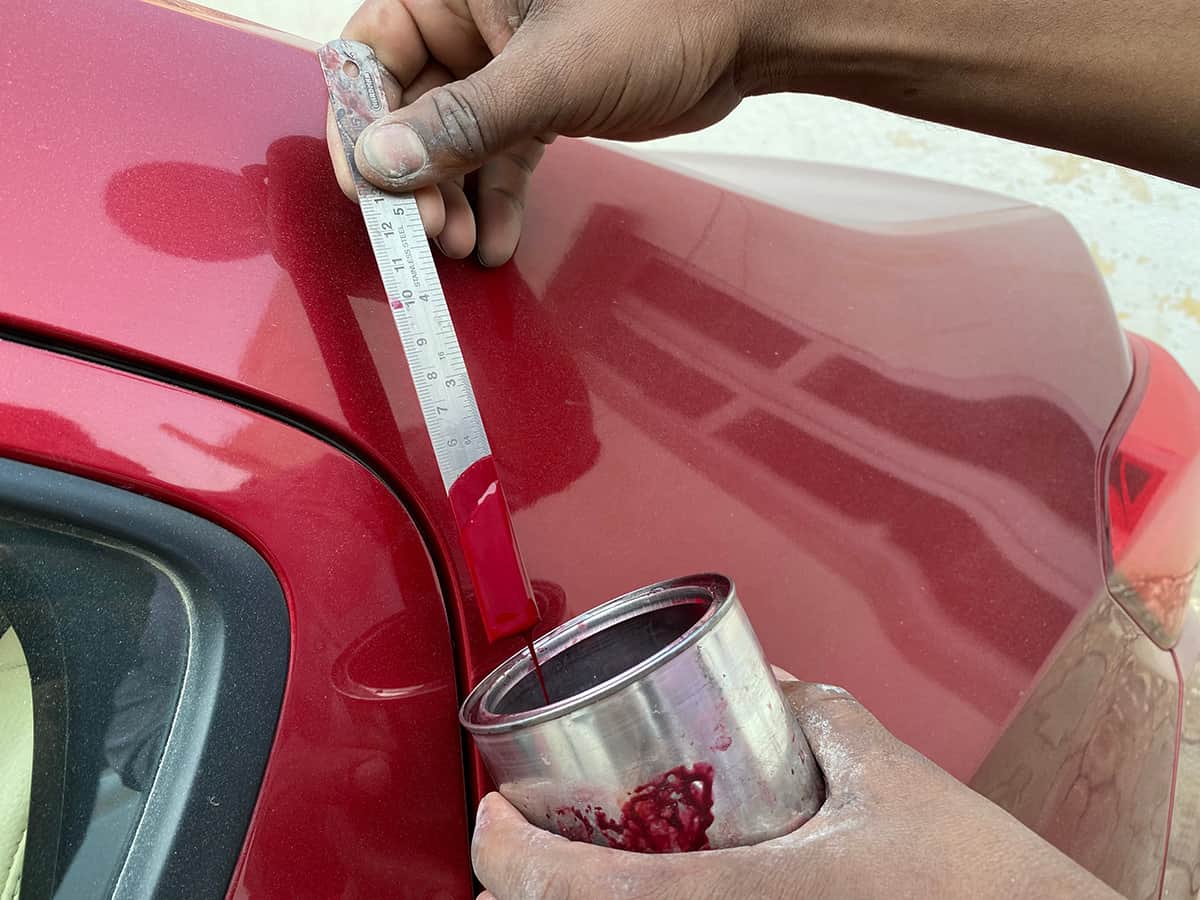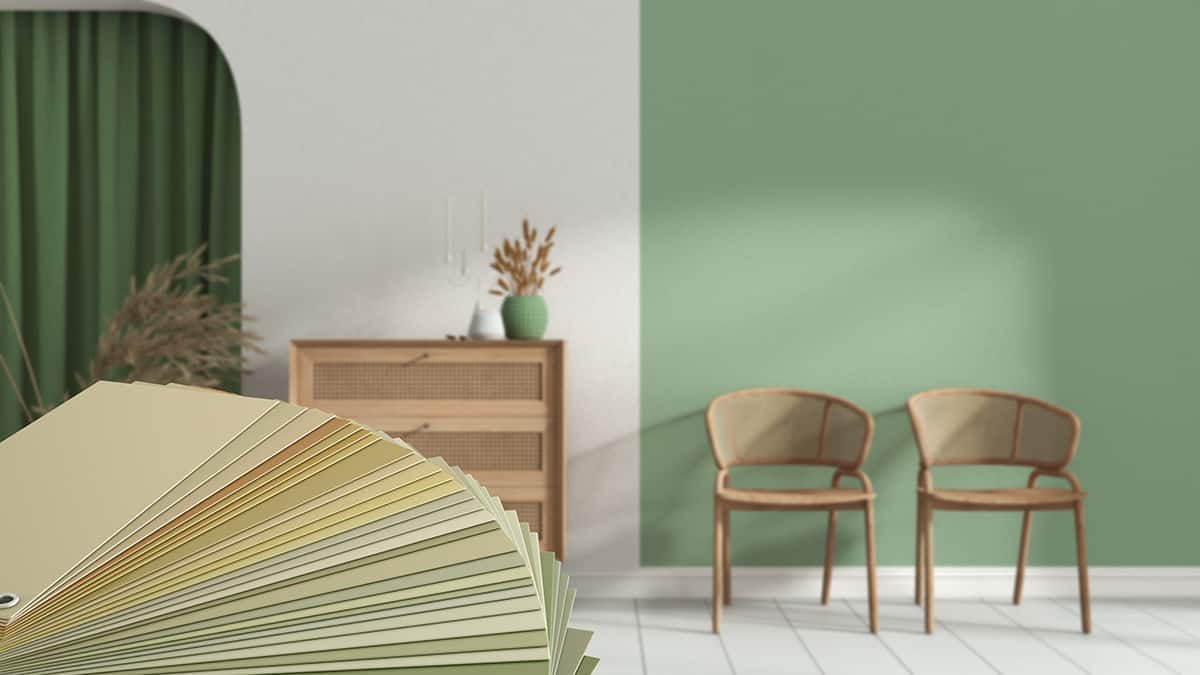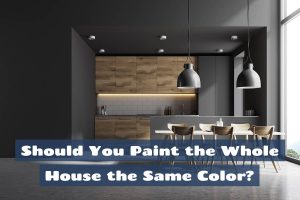If you’ve fallen in love with a paint color by Benjamin Moore but, for whatever reason, decide that you don’t want to get your color mixed by the designer, you might be asking the question about whether Sherwin Williams could color match the Benjamin Moore paint.
Technically, yes- Sherwin Williams can color match their paint to Benjamin Moore colors, but realistically- no, they can’t. This might sound a tad confusing, but bear with us while we explain the reasons behind this. Sherwin Williams, or any paint mixing provider, can offer to color-match paint for you, which has been designed by a different paint manufacturer. However, the color you actually receive as a result of the color matching is very rarely an accurate depiction of what the color should be.
This is why although you can get Sherwin Williams to color-match Benjamin Moore, you probably shouldn’t. Here we take a closer look at why color-matching between different paint providers usually doesn’t work out.
Will Color-Matched Paints Look the Same?
Paints that have been color matched to imitate another paint manufacturer’s color will not usually look exactly the same. This is, quite simply, because they are exactly that; an imitation rather than the real thing. In more technical terms, the reason why a color-matched paint won’t look identical to the original is that the bases that each paint manufacturer uses, as well as its tints, are all different.
When you go to the DIY store and ask for a color to be prepared, you’ll notice that the shelves are lined with tins that contain different paint bases. If you choose a particular color, it might indicate that you need ‘Base1’, or a different color might require ‘Base 3’. Since Sherwin Williams and Benjamin Moore use different bases, you can pretty much guarantee that any paint colors you try to mix using those different bases are, of course, going to end up looking different from one another.
Even if the exact same tints were used to mix with the bases, the fact that the base color you are starting out with isn’t identical obviously means the finished result isn’t going to be identical.
Unfortunately, this becomes even more complicated when you add in the fact that Sherwin-Williams and Benjamin Moore use slightly different tints for creating their paint colors. For example, when Benjamin Moore adds a dash of black tint to a color mix, it is pure black; however, when Sherwin-Williams adds a black tint to a color mix, it is a very dark shade of blue-black.
This obviously means that any dark paint color using black that Sherwin Williams tries to recreate from the Benjamin Moore collection is going to wind up looking cooler than the original version, with an undertone of blue.
Advantages of Color-Matching Paint
The main reason people endeavor to color-match paints between one manufacturer and another is to save money. Sherwin-Williams paints tend to cost a few dollars less per tin than Benjamin Williams, which can represent a considerable amount of money if you’re painting a large room or renovating a whole house.
While saving money certainly is an attractive advantage, you could end up spending more in the long run if unsuccessful color-matching means you aren’t happy with how your newly painted walls look. If you’ve specifically chosen a paint color that is perfect for your space, then you’re going to be disappointed with a color-matched paint because it simply isn’t going to be the same.
Most people would prefer to spend a little extra money and get the color they wanted rather than save a few dollars and be left unhappy with the results. However, if you’re on a tight budget and getting the exact color you want isn’t actually that important to you, then color matching could save you money.
Disadvantages of Color-Matching Paint
The biggest disadvantage of color-matching paint is the sheer fact that you aren’t actually going to get the color you wanted. If you’ve gone to the effort to choose an exact shade that you want, then attempting to color match is only setting yourself up for disappointment. A Sherwin-Williams copy of a Benjamin Moore color will never look exactly like the original color.
If you are insisting on using Sherwin Williams paint, then find an original Sherwin Williams color you’re happy with, rather than getting them to recreate a Benjamin Moore color. This is much more likely to give you better results. If your heart is set on the Benjamin Moore color, then pay a few extra dollars to have the original paint color exactly as it was designed to be, made by Benjamin Moore.
Color-matching paint can not only leave you feeling disappointed with the outcome, but it can also end up costing you more money and time. If the color-matched color isn’t what you hoped it would be, then at some point, you’re going to want to paint over it with the color you actually wanted.
This means buying even more paint and paying a decorator to repaint the space. If you’re a DIY painter and decorator, it probably means another wasted weekend spent on cutting in and paint-rolling the walls.
Conclusion: Avoid Color Matching Paint
Paint manufacturers spend enormous amounts of money designing and perfecting their colors to get the exact right shade, tone, hue, and finish. Asking one paint manufacturer to color-match a different paint manufacturer’s swatch is never going to end well because you are discounting all of the finesse and detail that has gone into creating that specific color.
Getting the right color that looks good with your furniture, and reads well in the type of lighting you have in your room, is not always an easy task, and it rarely happens by accident. If you’ve put time and effort into choosing the exact shade of paint you want for your home, then ensure you actually receive that color by having it mixed by the paint manufacturer who produced it.








